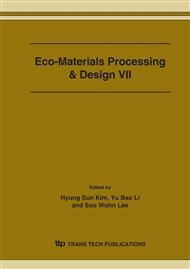p.666
p.670
p.674
p.678
p.682
p.686
p.690
p.694
p.698
Removal of Bilirubin by Albumin-Fixed Polysulfone Membrane
Abstract:
An asymmetric polysulfone membrane with reactive group of –OH was obtained by hydrolyzing the chloromethylated polysulfone membrane, and the albumin molecules were immobilized into the membrane with a crosslinking reagent of 1,4-butanediol diglycidyl ether. The albumin-fixed membrane was used to remove lipophilic toxins, bilirubin, from the bilirubin-albumin solution. The experiment results showed that the transfer rate of bilirubin was clearly enhanced after fixing albumin into the hydroxylated polysulfone membranes. The clearance of bilirubin was 49.3%. In addition, the effect of membrane thickness on the removal of bilirubin is discussed.
Info:
Periodical:
Pages:
682-685
Citation:
Online since:
March 2006
Authors:
Keywords:
Price:
Сopyright:
© 2006 Trans Tech Publications Ltd. All Rights Reserved
Share:
Citation:


